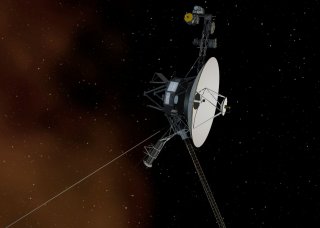What Spacecraft Will Follow Voyager 1 and 2 Into Interstellar Space?
An amazing legacy.
Voyager 1 and Voyager 2 launched a few weeks apart in 1977 and were given the monumental task of performing an unprecedented “grand tour” of the solar system’s giant planets. Then in August 2012, Voyager 1 made its historic entry into interstellar space, a first for a man-made object. Voyager 2 followed suit on Nov. 5, 2018.
So, now the question is which spacecraft are next in line to follow Voyager 1 and 2 into interstellar space. Right now, there are three strong candidates that can eventually accomplish this: Pioneers 10 and 11, and New Horizons.
According to NASA’s e-book “Beyond Earth: A Chronicle of Deep Space Exploration,” as of late 2017, Pioneer 10 was about 118.824 AUs from Earth, which is farther than any spacecraft besides Voyager 1.
However, Pioneer 10, launched in 1972, is heading in the opposite direction of Voyager 1, where the tail of the heliosphere boundary is much farther away—about 220 AUs from the sun. Currently, Pioneer 10 travels about 2.5 AUs per year, and at this rate, the spacecraft will enter interstellar space around the year 2057.
As for Pioneer 11, it was estimated to be about 98 AUs from Earth, but it is traveling in the same direction as Voyager 1 and 2, which means that the boundary of the heliosphere is much closer. Pioneer 11, launched in 1973, is currently traveling at about 2.3 AUs per year, and it should enter interstellar space within this decade, around 2027.
The most recent spacecraft of the three is New Horizons, which was launched in January 2006. It is also traveling much faster than both Pioneer 10 and 11, registering speeds that cover 3.1 AUs per year. According to NASA’s calculations, New Horizons has a solid chance of entering interstellar space in only about 20 years.
Keep in mind that crossing the boundary of the heliosphere, the protective bubble of particles and magnetic fields created by our sun, is the determining factor for entering interstellar space—but even then, it is still considered within our solar system.
These three spacecraft, along with Voyager 1 and 2, won’t be leaving the solar system anytime soon, as that boundary is considered to be beyond the outer edge of the Oort Cloud, an assortment of objects that are still under the influence of the sun’s gravity. In fact, it will likely take about 300 years for Voyager 2 to reach the inner edge of the Oort Cloud—and possibly 30,000 years to fly past it.
Ethen Kim Lieser is a Tech Editor who has held posts at Google, The Korea Herald, Lincoln Journal Star, AsianWeek and Arirang TV.
Image: Reuters

